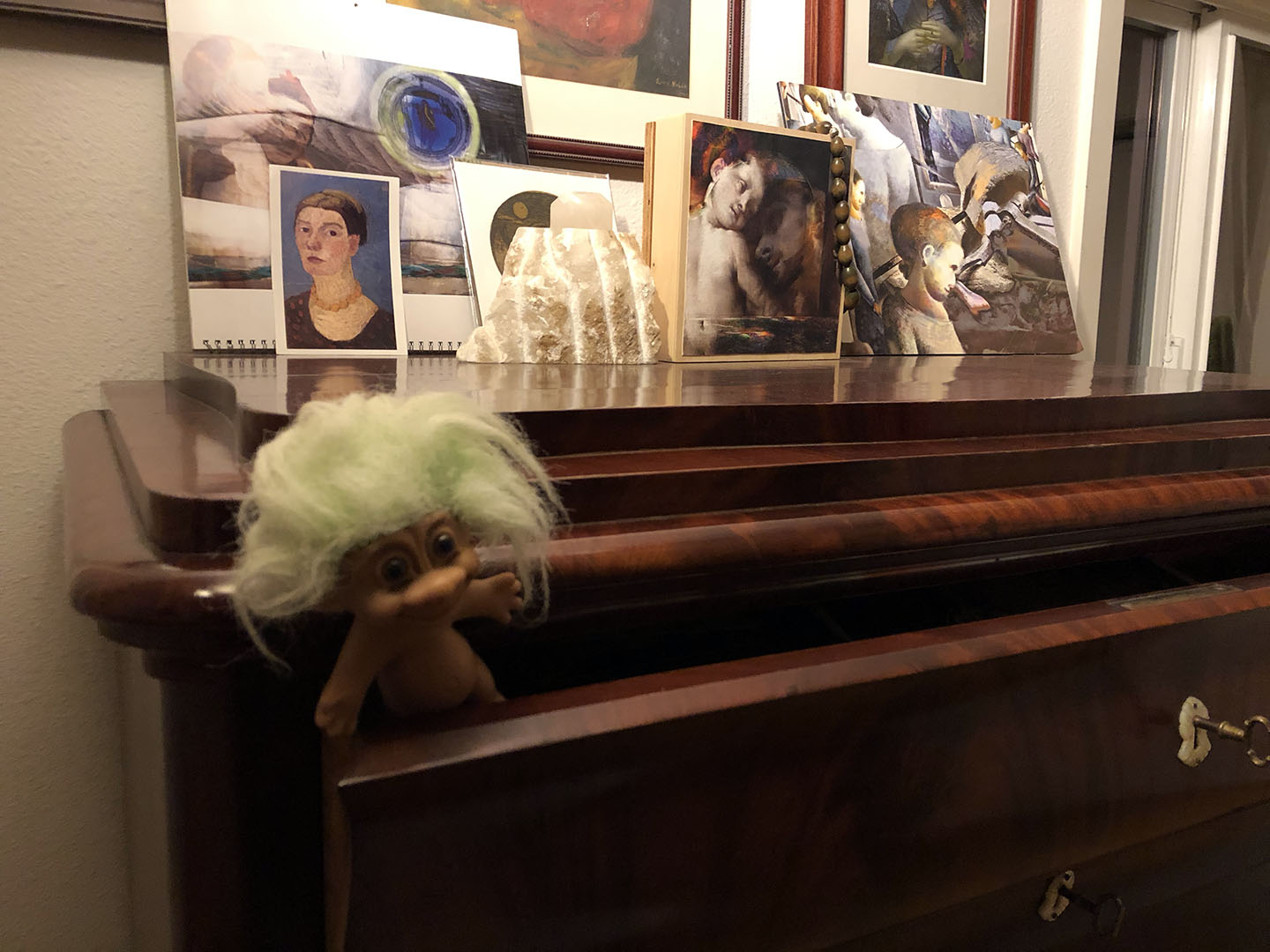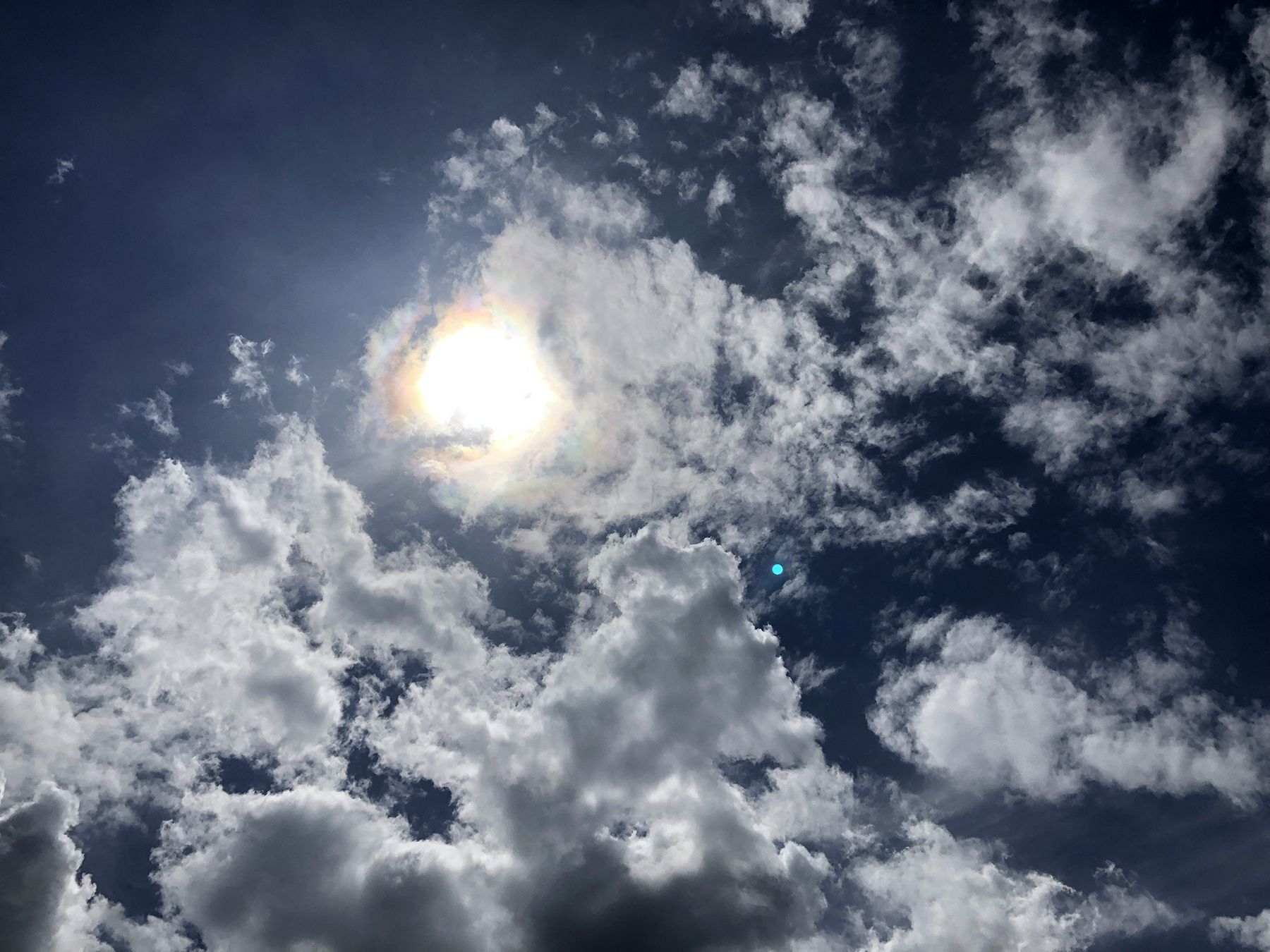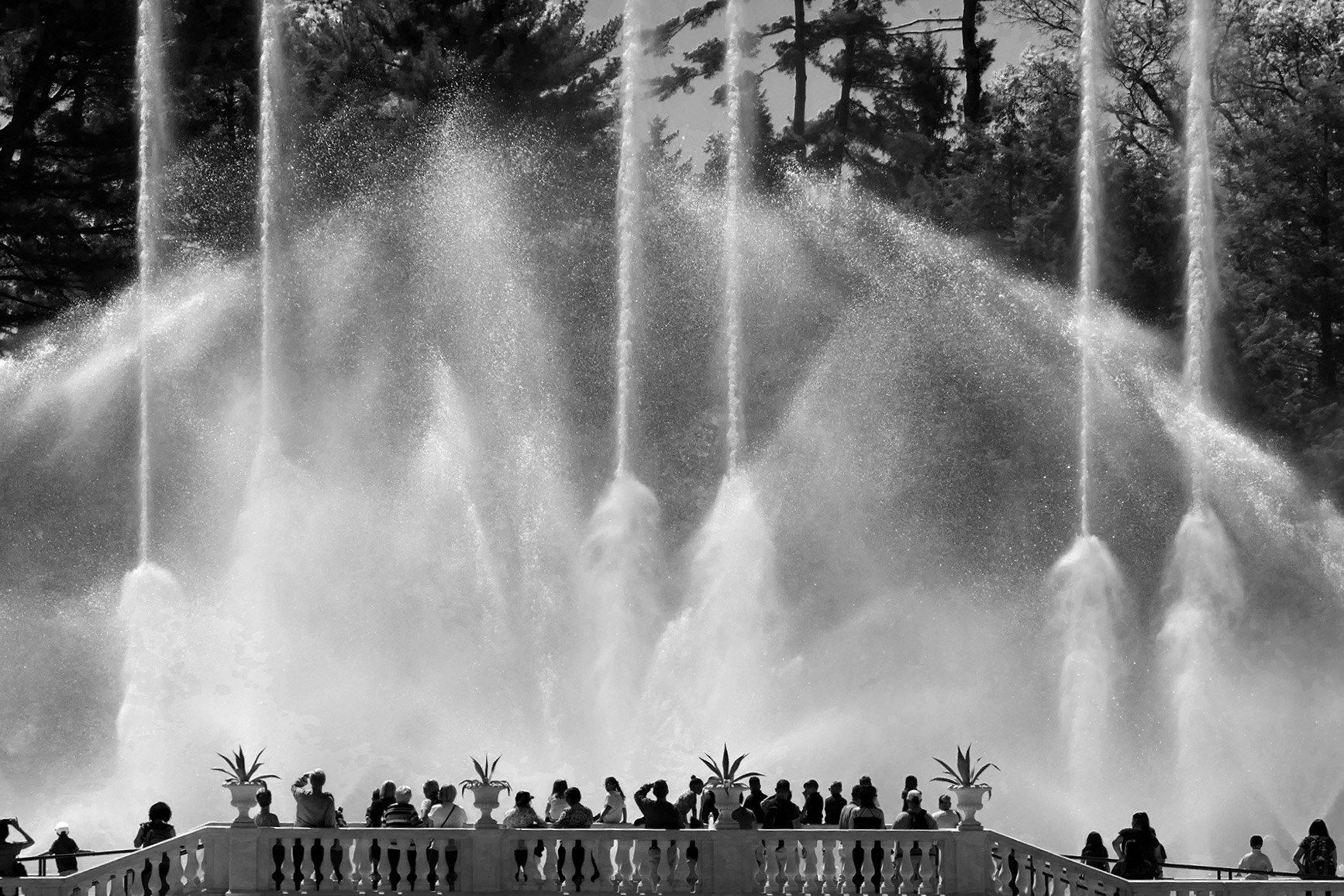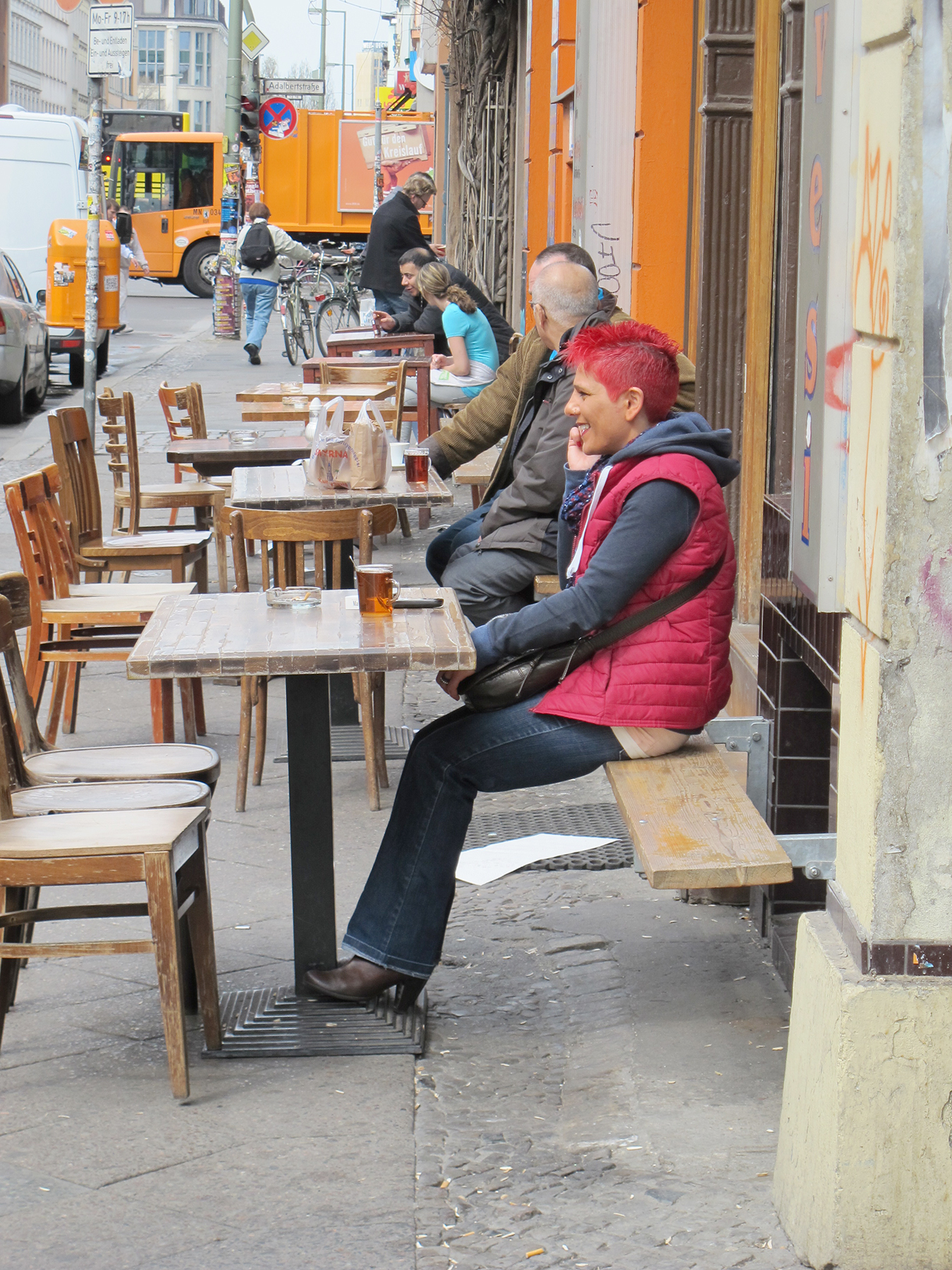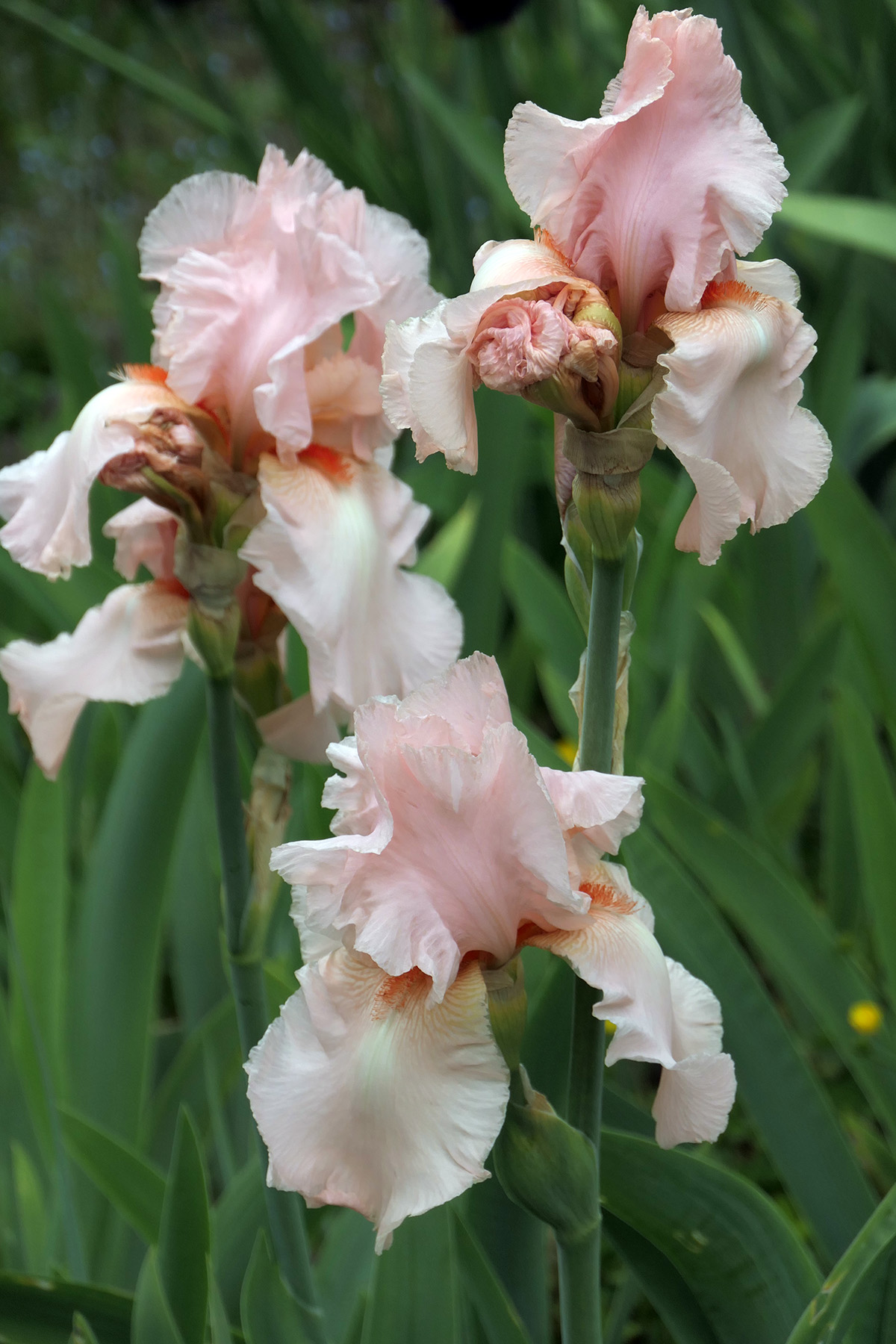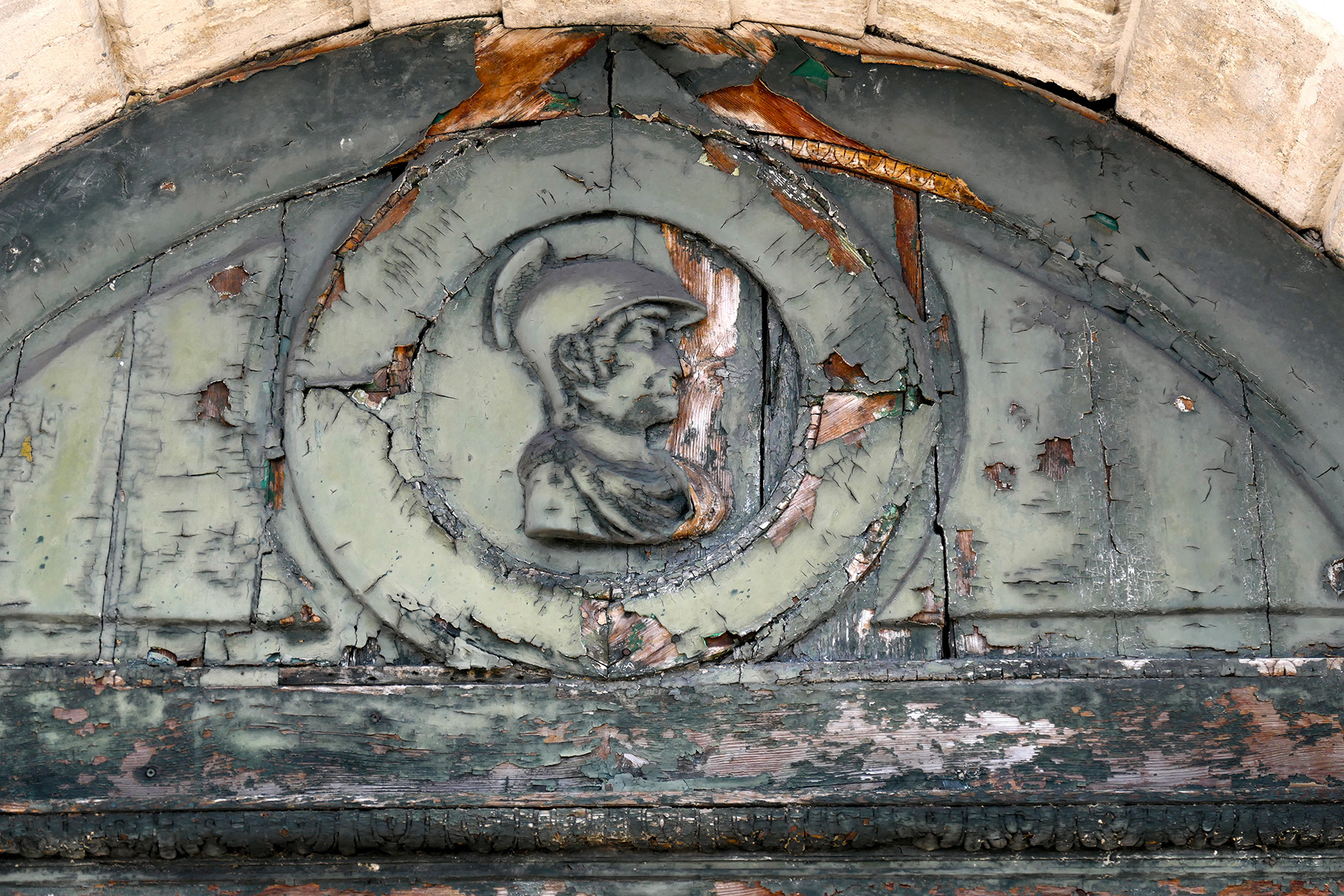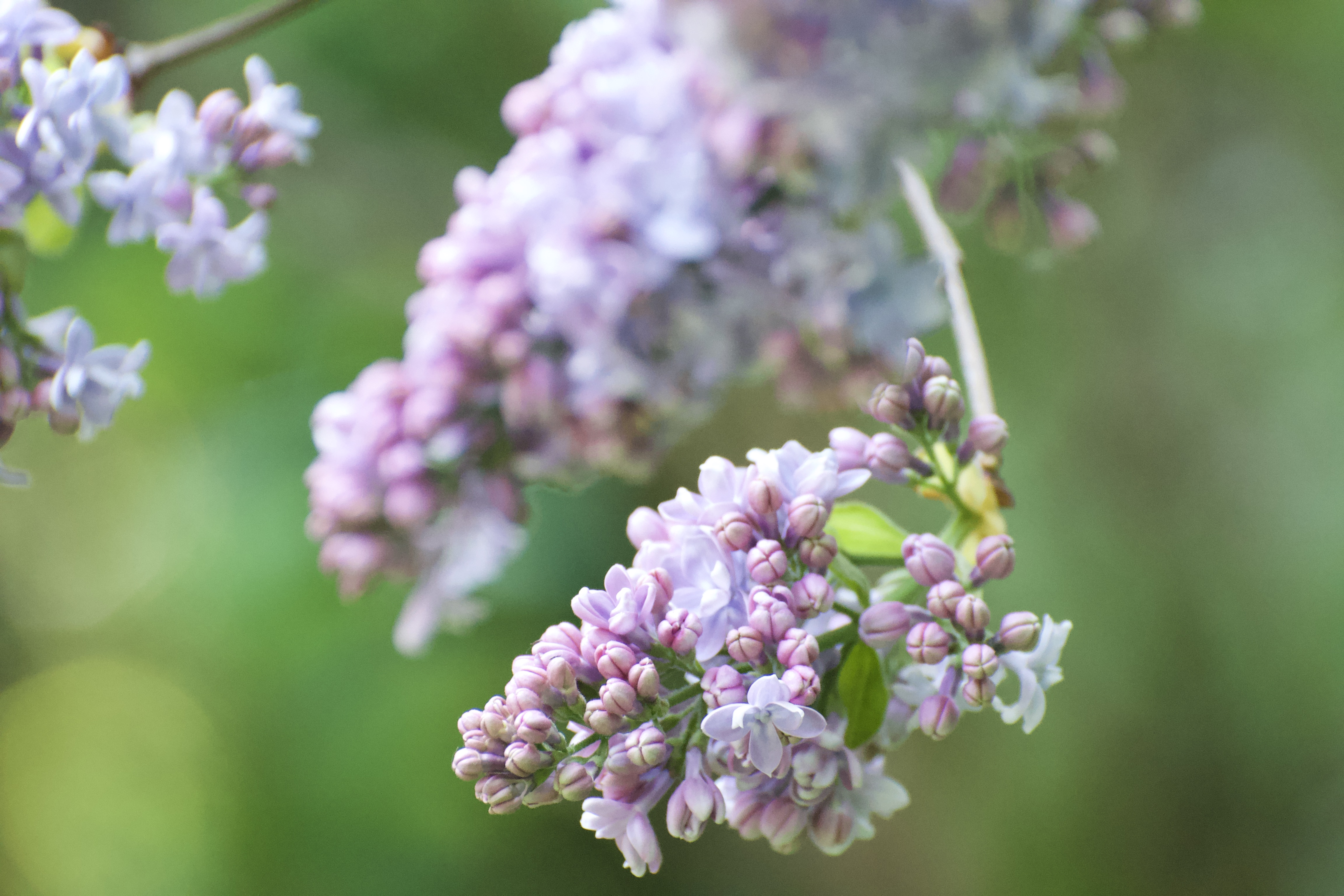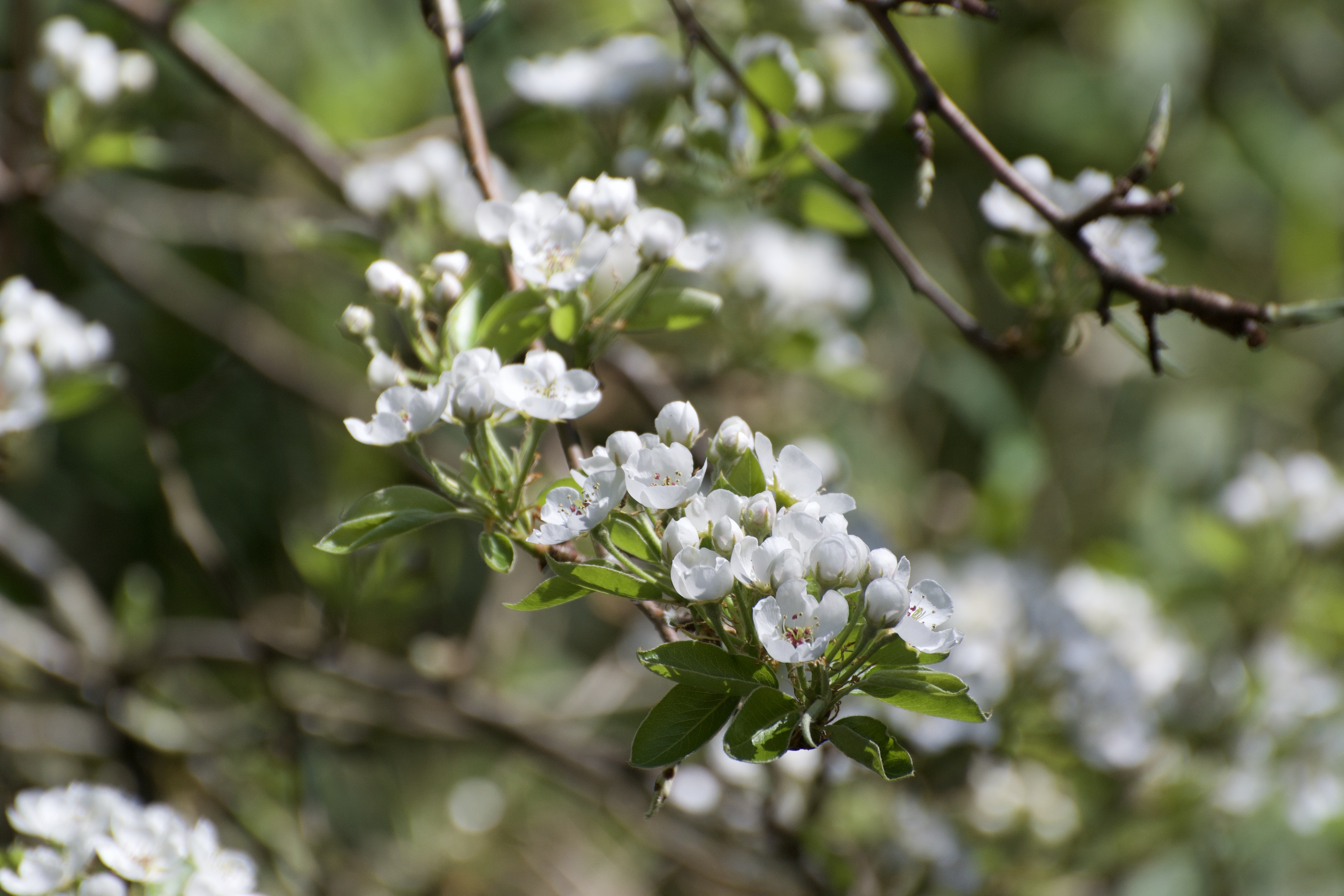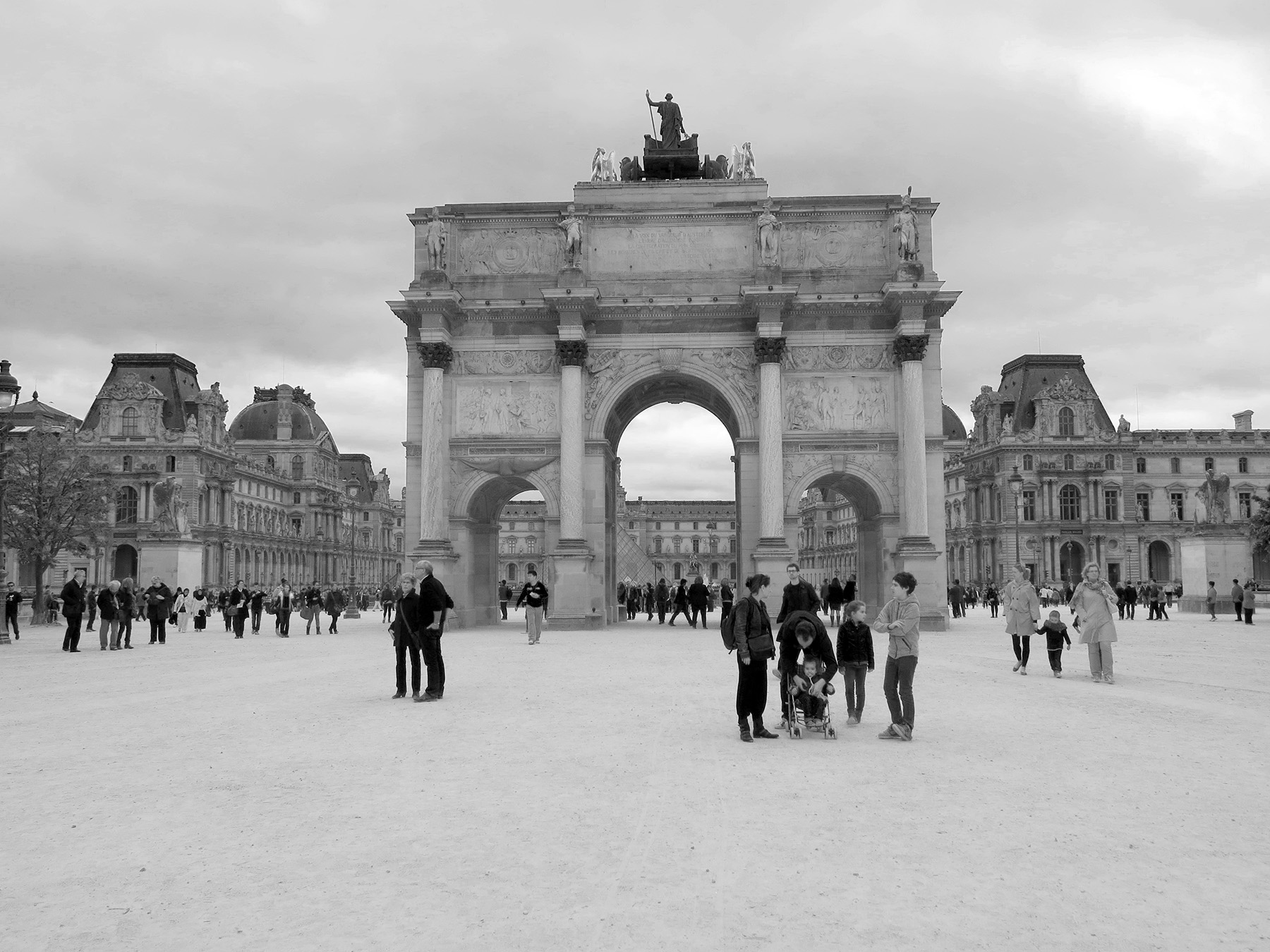Somehow the trolls escaped their storage in one of the boxes full of the boys’ childhood toys. They emerged in February, popped up in ever changing locations, the perfect enticement to walk through the house to find them, which provided post-surgery exercise and cheer at the same time. Sometimes they were easily visible, sometimes you chanced upon them when opening the fridge or a drawer, at times they even ventured onto the windowsill, the laundry line or balcony railings outside. It was just a sweet game, a playful distraction during hard months, one of the ever-loving gestures of my beloved.


Their gigantic cousins, not plastic casts made-in-China, but hand-crafted wooden sculptures with individualized personalities and features, can be found across the world in various parks and natural locations, from Puerto Rico to South Korea. The Danish sculptor Thomas Dambo even provides a troll map so you can locate individual sites during your travels. (If you open the map and click on any X it will pop up a drawing; if you click on that you get location and photos.) The closest to us here in Oregon is a site in Colorado and a recent one in Wyoming; my readers overseas have plenty of choices in Denmark in particular.

They are huge, they are whimsical, and they are probably perfect magnets to get the kids to walk in the woods. Made of recycled wood they are placed to encourage interaction, yet always in cooperation with park administrations to avoid sensitive land destruction. Here is a fun clip how the recycle artist, marooned in Denmark by the pandemic, bereft of all of his international assignments, decided to create a covid-19- proof treasure hunt all across parks in the small country, with 10 sculptures to be found by people in general lockdown.
“The way I trolled Covid-19,” were his words describing the project, words that alerted me to the fact that trolling has become a verb. It is an expression that we most often encounter in the context of internet exchanges that are hurtful and vicious towards a variety of chosen targets.

According to the Urban Dictionary, trolling “is the deliberate act…of making random, unsolicited and/or controversial comments on various internet forums with the intent to provoke an emotional knee jerk reaction from unsuspecting readers to engage in a fight or argument.” It is defined as a malicious online behaviour, characterised by aggressive and deliberate provocation of others. “Trolls” seek to provoke, upset and harm others via inflammatory messages and posts.
The consequences range from rolling your eyes and blocking the offensive party, to depression, social anxiety, loss in self-esteem and even suicide. In fact there are internet forums geared toward publicly provoking self-harming behavior and live watching the results of their sadism. But generally, the insults just appear on your own twitter or other social media handle.
“Online abusers can cause hurt to others, and do so repetitively, without interruption and all the while are protected by the safety that anonymity provides in cyberspace. Studies suggest that they might be driven by their own past trauma as a victim of similar behaviour, or simply to satisfy the needs created by their narcissistic psychopathic personality traits. Either way, the research behind online trolling or abusive behaviour is in its infancy, much like the existence of these sites. Research on criminal narratives, if a sample of abusers could be accessed, would build on this emerging area of study, and provide insight into the roles that these abusers see themselves playing.”

Studies show that the on-line harassment has also economic consequences. In Australia, for example, they estimated in 2019 that online harassment and cyberhate had cost an estimated total of $3.7 billion dollars in health costs and lost income. If anything, things have gotten more frequent and intense since then, with the Olympics creating a fire storm for online trolls. Female athletes were harassed by anti-feminist trolls for their hair styles, under-performing athletes were insulted, and nationalism had a field-day slinging insults at foreign athletes. Can you imagine the pressure you are under to perform in an event like this and then come home to thousand of insult dragging you through the mud? If not, talk to LeBron James – he is claimed to be the most trolled athlete in the world.
One of the worst form of trolling is called doxing, having personal details published to intimidate the recipient or impersonating someone. This has become a relevant factor in our current political landscape, where people post home and workplace addresses of those they want to hurt, with enough crazies with weapons out there now enabled to act out on perceived “traitors.” It is not just famous people who have become targets, like Dr. Fauci who needs security personnel; it is also done to people on local levels who have spoken out against conspiracy theories or in favor of controversial policies, as public health officials, election officials, on school boards, or in community forums. Sickening.

So what can one do when faced with trolling? DO NOT FEED them, first of all, never respond to the hate, even with logic or by changing your own comments that triggered their outbursts. You can also report or flag trolls with administrators of social media; that might at least lead to those comments being hidden, if not to banning the troll outright. Talk to other people you trust, your friends, colleagues or people in mental health professions, if you your reactions overwhelm you and you find yourself unable to shrug the hate off, taking it personal. Take a break from social media – recommended highly even if you were never exposed to trolling – to get away from a world that sustains and fosters misery and hate.
If all else fails, make trolls your personal adventure in real life – the little ones are perfect for that, the giant ones even better should they move you to travel and be distracted by the beauty of the world. Well, worth a try.



Music is Grieg’s March of the trolls, surprisingly fast.
If you are in the mood for the full Peer Gynt Suite, go here.

And here is a gem – a 1946 radio staging of Ibsen’s Peer Gynt (the folktale play that forms the basis for Grieg’s Suite), with Laurence Olivier as the troll king and Grieg’s music. Do yourself a favor and listen at least to the first 5 minutes, (fast)language at its best once the play starts.

